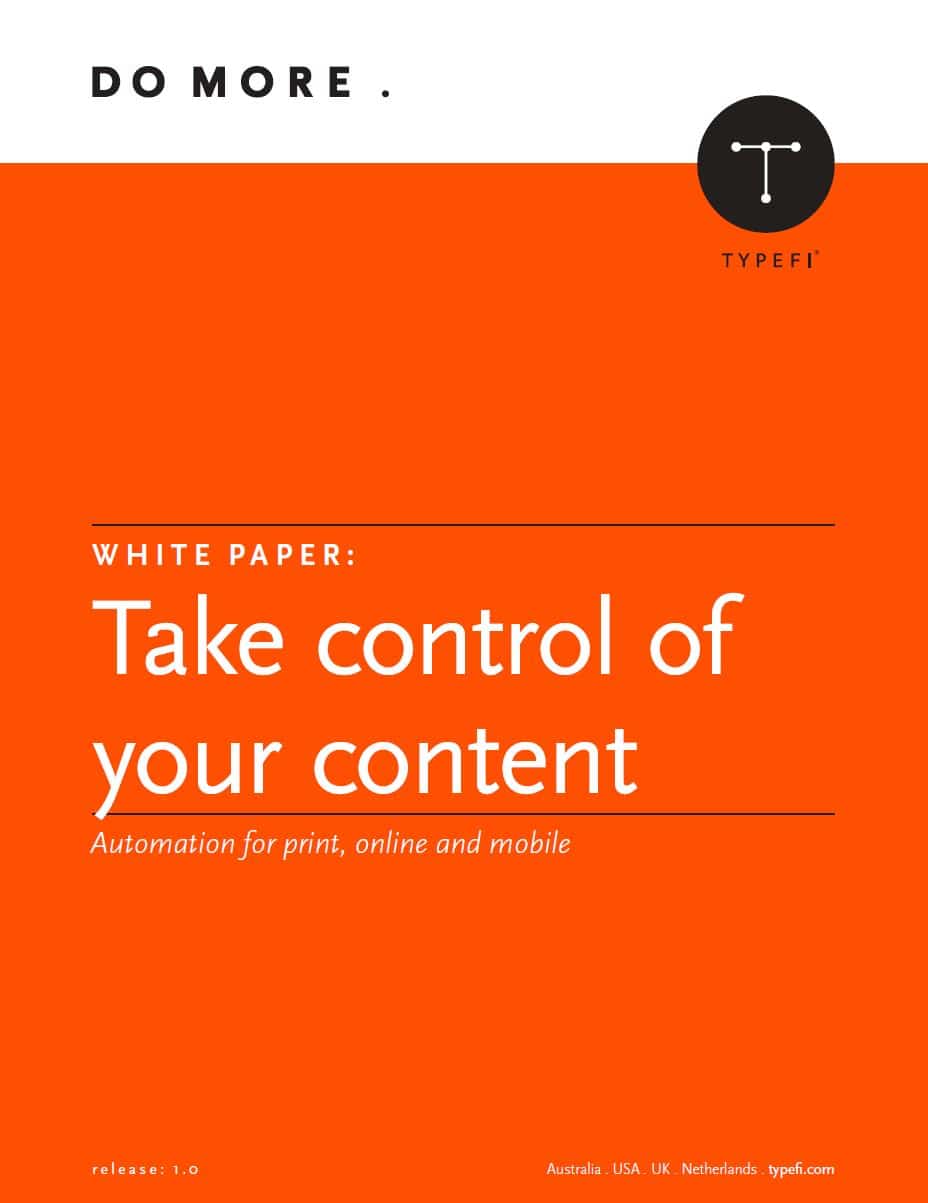Many organisations implement a Content Management System (CMS) or an Automated Publishing System (APS) with some vague concept of content reuse and without a clear view of what they want to achieve.
To best leverage the benefits of a CMS or APS, it’s helpful to understand your content and how you use it, articulate clear goals on what you want to achieve with your content, and complete a content analysis. As part of this process, it is especially important to develop a semantic, structured approach to content development, including the creation of style naming conventions, style guides, and style templates.
This white paper guides you through a series of steps that you can take to help your organisation manage content more efficiently, including:
- Developing a content strategy;
- Conducting a content analysis;
- Coming up with a semantic style naming convention; and
- Creating editorial and design style guides.
Soon everyone on your team will be using the same language to speak about your content, you’ll know exactly what you’re producing and where it needs to go, and you’ll be able to move content between your templates much more easily because all your style names will be consistent.
If you’re ready to take it further, you’ll be well prepared to consider how content management systems, automation, and XML could fit into your publishing process.
If this paper gets you inspired and you’d like to discuss content management or any other aspect of your publishing process with our team, don’t hesitate to drop us a line.
About the author

Eric Damitz is a Senior Solutions Consultant at Typefi, where he works closely with customers to determine the best way to use Typefi for their particular needs, and then implements their solution.
Eric started in publishing over 20 years ago as a TeX typesetter at a small development house, where he learned such valuable skills as opaquing film, making Dylux proofs, and pasting up forms with hot wax. He also learned desktop publishing, which was somewhat more useful. He moved to a large educational publishing company and spent 17 years as a production manager working with his colleagues to reinvent how publishing works—several times.
Eric’s particular skillset focuses on publishing automation, workflow improvement, and single-source publishing for both digital and print. He has a degree in Rhetoric (writing, not arguing) from the University of Illinois at Urbana-Champaign.

